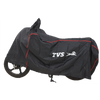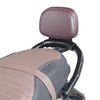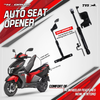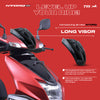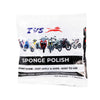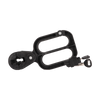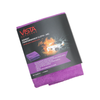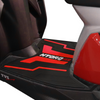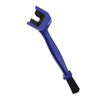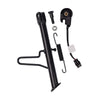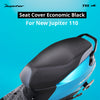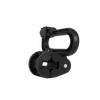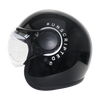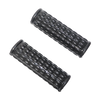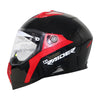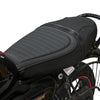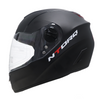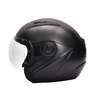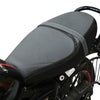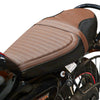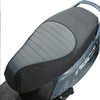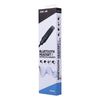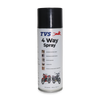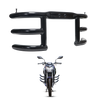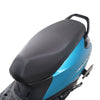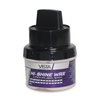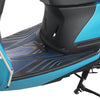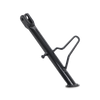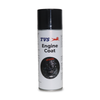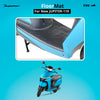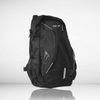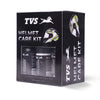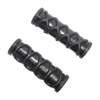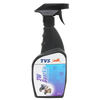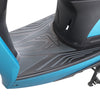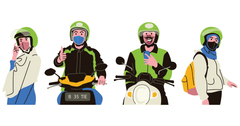How to Choose the Perfect Helmet Size for Your Safety
A helmet should feel like an extension of your head – secure, comfortable and fit like a glove. No one can deny the sense of protection and confidence that only the right helmet size can provide while you are on the road. On the other hand, an ill-fitting helmet can be uncomfortable and compromise your protection. Wearing the wrong size helmet can be a rider’s worst headache to state the least.
Whether you’re commuting daily or hitting the open road, choosing the right helmet can go a long way in ensuring your motorbike rides are safe and smooth.
But how to measure helmet size so that it fits like it was just made for you? Choosing the right size for your helmet can be tricky and a poor fit can even make the best helmet feel like a burden. That’s why size guides for helmets exist! In this guide, we’ll help you find your perfect bike helmet size – from measuring your head to understanding size charts – so you can ride with confidence and comfort.
Understanding Helmet Sizes & Charts
Choosing the right helmet starts with understanding the helmet size chart. These charts show a range of sizes based on head circumference, usually measured in centimetres (cm) or inches. These charts are important for ensuring a proper fit.
Here’s a quick look at how various sizes in a helmet generally break down:
| Size | Head Circumference (cm) | Head Circumference (in) |
| XS | 53-54 | 20.9-21.3 |
| S | 55-56 | 21.7-22.0 |
| M | 56-57 | 22.0-22.4 |
| L | 58-59 | 22.8-23.2 |
| XL | 60-61 | 23.6-24.0 |
| XXL | 62-63 | 24.4-24.8 |
Helmet sizes range from XS to XXL, each size corresponding to a specific head measurement.
Remember, helmet size charts can vary between brands, so always check the specific size chart for the helmet you are interested in. For example, TVS has multiple full-face motorbike helmets, each with its own size chart to ensure the best fit.
Measuring Your Head
Imagine frantically buying a helmet only to find it to be ill-fitted. A complete no-no situation, isn’t it? You can save yourself from such a nightmare by measuring your head before adding your favourite helmet to the cart. To find the right helmet size, you need to measure your head accurately. Here’s how:
How to Measure Helmet Size
- Gather Tools: You’ll need a flexible tape measure or a piece of string and a ruler if you don’t have one.
- Measure the Circumference: Place the tape measure around the widest part of your head, about 1 inch above your eyebrows. Make sure the tape is in line with your eyebrows and not too tight or loose.
- Record the Measurement: Write down the measurement in cm or inches. This is your helmet size measurement.
Using a Head Size Chart
Check a head size chart to match your measurement to the right size for the helmet. Measurements for each brand can vary slightly so always check the specific chart for the helmet you are interested in.
Choosing the Right Helmet Size
Choosing the right size for your helmet goes beyond measuring your head. Follow these simple yet essential steps after taking your head measurements to ensure a proper fit:
-
Comparing Your Measurement with Size Charts
Match your head measurement to the size chart of the helmet you’re checking out. Most brands usually list the measurements in both centimetres and inches. For instance, if your head circumference ranges between 56-57 cm, an M-size is your ideal fit. However, always check the size chart for the specific model you are considering to ensure proper fit.
-
Try-on the Helmet
After you’ve selected a size, you must try on the helmet. The helmet should fit snugly but not too tight. It should sit flat on your head with the front edge just above your eyebrows. TVS XPOD Primus Helmets are comfortable, lightweight and stylish and come with a quick-release adjustable strap.
-
Adjust the Fit
Many helmets like the TVS Racing Helmet have adjustable pads or liners. Try these to get the perfect fit for your helmet size.
Gear up for a remarkable ride with TVS Racing Helmets – where cutting-edge safety meets unbeatable style.
Signs of a Poorly Fitting Helmet

Once you know how to check helmet size, you can easily identify if your helmet has something off. A helmet that doesn’t fit right is dangerous and uncomfortable. A bad fit can be spotted by a few telltale signs. Knowing these will help you avoid discomfort and get maximum protection:
-
Helmet Moves Excessively
If the helmet moves or shifts on your head, it’s too big. A proper-fit helmet should stay in place and provide consistent protection.
-
Discomfort or Pressure Points
A helmet that causes pressure points or discomfort is too small for your head. It should fit comfortably without causing pain or leaving marks on your skin.
-
Helmet Slides Forward or Backward
The helmet should sit flat on your head, just above your eyebrows. If it slides forward or backwards, it’s not the right size.
-
Not Enough Padding
Insufficient padding can cause discomfort and bad fit. Make sure the helmet has enough padding to provide comfort and protection.
-
Poor Visibility
A helmet that blocks your vision is not ideal for you, no matter the size and fit. Ensure the helmet doesn’t block your peripheral vision or ride up over your eyes. With its Anti-fog Pin-lock system, the TVS Racing Dual Visor Helmet ensures an unobstructed view for the rider.
Factors to Consider
Apart from size, other factors can affect how well a helmet fits and performs. When choosing a helmet, consider these factors to get the perfect fit and maximum comfort:
-
Helmet Shape
Helmets come in different shapes, round, oval or intermediate oval. Matching the helmet shape to your head shape is as important as getting the right size.
-
Padding and Liners
Good padding can make a big difference in comfort and fit. Some helmets have adjustable padding that can be adjusted within the same size. Check out the TVS Racing Helmet for customisable comfort and extra protection.
-
Strap Adjustments
An adjustable strap helmet will give you a better fit. Make sure the chin strap is snug and under your chin, ensuring the helmet is locked properly.
-
Weight and Material
Weigh the helmet as lighter helmets offer maximum comfort and convenience for longer rides. In addition, thoroughly examine and compare the material of various helmets to select the one that best suits your needs.
ABS (Acrylonitrile Butadiene Styrene) is a widely used shell material in safety helmet manufacturing. Prioritise your gear’s durability and safety quotient, securing a worth-it deal.
-
Additional Features
Features like sun visors, anti-fog shields and built-in communication systems can add convenience and make your ride more enjoyable. TVS Aerodynamic Helmet is designed to offer minimum air resistance, better ventilation and maximum safety during your rides. and various models with these features.
-
Brand and Quality
Choose a brand that is known for its quality and safety standards. Choosing a helmet from a renowned brand means you get a product that puts your safety and comfort first. TVS Helmets stand out in this regard. They are designed with the latest safety technology to protect you in all riding conditions. These helmets are put through rigorous testing to meet high safety standards so every ride is as safe as fun.
Did You Know?
Besides size and fit, factors like the colour of your helmet also play a crucial role in ensuring your safety. You read it right! According to road safety experts, bright colours, like white or yellow colour helmets increase visibility on the road and reduce the chances of accidents, especially at night.
Discover Your Perfect Fit With TVS
Choosing the right helmet size is a combination of accurate measurements, understanding the size chart and personal comfort. Always try on different sizes and styles to find what suits you. Remember a well-fitted helmet is an investment in your safety, so don’t rush it. Explore the range of Motorbike Helmets at TVS and find your right fit and style.
Because why settle for one when you can have the best of both worlds!
Here are some pro tips to make every commute an adventure:
1. Plan Your Route
Before you hit the road, know where you’re going. Planning your route isn’t just about finding the fastest way; it’s about choosing roads that feed your sense of adventure. Whether it’s endless highways or busy city streets, choosing the right route can turn a boring commute into a daily escape.
2. Dress for the Weather
The weather can change quickly, especially during monsoons. Wear protective gear like waterproof jackets and gloves to stay dry and comfortable. Layer up or down depending on the season to maintain a good balance of warmth and ventilation.
3. Check Your Bike Daily
Your bike is your steed, and it needs some love and care. Before you hit the road, give your bike a quick yet thorough inspection. Check the tyres, brakes and lights. A well-serviced bike means a safe and stress-free ride.
Check your bike and safety gear using the TVS bike maintenance kit so you’re always ready to go!
4. Take Care of Your Belongings
Use bike travel accessories like laptop or office backpacks to secure your belongings. It can easily contain electronic devices like a cell phone or tablet, laptop, water bottle and important documents. Having your essentials safe and within reach can make your commute much easier and less hassle.
5. Mind the Traffic Rules
Obey traffic signals and signs, just like you would in a car. This not only keeps you safe but also sets an excellent example for other cyclists. Always ride predictably and signal your intentions to other road users.
6. Pack Light
Daily commute calls for light packing and carrying useful items only. Focus on carrying the essentials. Pack smart, bring only what you need and make sure your load is well-balanced. Lightweight, compact gear means a smoother, faster ride so you can focus on the road ahead.
7. Hydrate and Fuel Up
Even explorers need to refuel. Keep yourself hydrated and energised with water and snacks. It’s the little things that keep your body ready for the next adventure.
8. Invest in Good Footwear
Wearing the right shoes can make a big difference. Consider using a bike gear shoe protector to keep your shoes in good condition and prevent slipping during rides. Good shoes not only mean comfort but also control over the bike.
9. Be Visible
Commutes can happen at odd hours, like late evenings or early mornings, so being visible is key. Fit bright lights and reflectors on your bike and wear reflective gear. Visibility is about safety and showing the world you’re out there.
10. Prepare for Emergencies
Always carry a basic bike riding safety kit with you. This should include a tyre repair kit, a multi-tool and a first aid kit. Being prepared for minor mishaps can save you time and stress during your commute.
Finally, stay relaxed. Enjoy the ride, and don’t rush. A relaxed rider is a safe rider, so take your time and enjoy the ride.
Wrapping-Up
Every ride is a story waiting to happen—a story of speed, freedom and the open road. With the right biking gear, you’re not just commuting; you’re going on a daily adventure. From gear that ensures safety to must-have bike travel accessories, these essentials ensure every ride is as exciting as the last. So gear up, stay safe and let the road take you to your next great story.
Ready to elevate your ride? Explore the full range of TVS Biking Gear and accessories to fuel your daily adventures.


